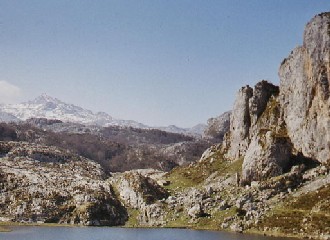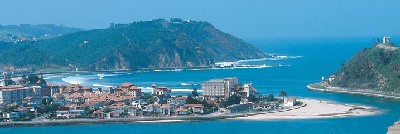Asturias
Asturias is one of Spain's 17 autonomous communities. It sits to the north of the country and is bounded by Galicia to the west, the Bay of Biscay to the north and the region of Leon to the
 south. Asturias is famed for its green scenery and temperate climate. It has an economy that is still highly dependant upon fishing, but enjoys an increasing level of tourism each year, especially from walkers and those wanting to escape southern Spain.
south. Asturias is famed for its green scenery and temperate climate. It has an economy that is still highly dependant upon fishing, but enjoys an increasing level of tourism each year, especially from walkers and those wanting to escape southern Spain.
Cities
Although not the largest of Spain's many provinces, Asturias does hold three major cities. The first of which is its capital, Oviedo, a cathedral city and one with a history dating back to Roman times and beyond. Despite its status as the region's capital, Oviedo has a population of less than one quarter of a million people.
The second city is the region's biggest, Gijon and again a settlement has been there for almost two millennia. Gijon was and remains an important fishing port.
The third of Asturias' cities is Aviles, primarily a commercial town, but one with plenty of attraction to appeal to the tourist.
The principality of Asturias has mountain ranges including the Cordillera Cantabrica and, unlike many other parts of Spain, these retain their snowy peaks throughout the year.
The coast of Asturias, known as the Costa verde, or green coast, is only around 100 miles in
 length, but offers spectacular scenic views and can easily fill an entire day's drive. One of the best beach resorts in the area is that of Llanes.
length, but offers spectacular scenic views and can easily fill an entire day's drive. One of the best beach resorts in the area is that of Llanes.
From a vacationing perspective this area represents green Spain at its best and offers a similar appeal to its equally lush neighbour Galicia. But the region has its own character and this is demonstrated through its unique cuisine and festival celebrations. Asturias is also a region where a significant percentage of the population live in towns and villages, many along the attractive coastline.
Moving inland, more mountain ranges dominate and these include the snow covered peaks of Picos de Europa (over 2500 metres high). Forests, rivers and natural lakes also contribute to Austurias' natural beauty making it a haven for walkers and cyclists alike.
Although very much untainted by tourism, this part of Spain is now being explored by international tourists and the region is very well serviced by hotels and hostels. It also has its own international airport, "Santiago del Monte Airport" and in addition the eastern parts of the province can also be reached from Santander Airport.
If you cannot find sufficient information about Asturias on this site, please take a look at Asturias Guide, a website dedicated to the region and provinces of Asturias with guides to Oviedo, Llanes, Covadonga and many more towns within the region.

